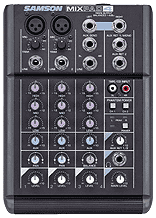

Data from the computer comes out of the interface, through a converter, through an amplifier, then to speakers or headphones. When we want to play rather than record, the blocks are the same but in reverse order. That completes our trip from sound to data. By far the most common of these is USB, and we call this connection an interface. Our data then needs to be sent from the converters to the computer, which is done over a high-speed data connection. The converters that take signals between the analog and digital domains are called – surprise, surprise! – analog-to-digital converters and digital-to-analog converters, usually abbreviated A/D and D/A or ADC and DAC. However, if we plan to use a DAW, we need to bring our signal into the digital domain, a process called conversion. If we’re staying in the analog domain, this is when we’d send it back out of our mixer to be recorded on tape. Once we have this amplified electrical signal, we can mix it with other signals, process it with effects like compression or EQ, and so on. Usually there are two: the head amp inside the microphone body that delivers a still-weak but relatively robust signal, and the preamplifier that massively increases the signal strength to the line levels seen inside audio electronics like mixers. So it’s vital that the signal we want is quickly made much stronger so the outside noise will be negligible, and we do that by running it through an amplifier. This electrical signal is very weak, perhaps only a few thousandths of a volt, and it’s fragile – external noise can corrupt it easily. The mic element can take many forms: a magnetic coil, a capacitor with diaphragm and backplate, a thin metal ribbon suspended in a magnetic field, even a container of magnetized carbon granules! What all of these have in common is that they move in response to the moving air of the sound, generating a tiny amount of electricity.

It’s picked up by a microphone, which acts as a transducer: a device that turns moving air into electricity, or vice versa. Think of a speaker cone going in and out as it plays, and you can imagine how air is compressed and rarefied, creating a waveform. Our sound begins as moving air – changes in air pressure. In a recording studio, it’s easy to see how a sound gets into your DAW (digital audio workstation), because all of the individual pieces of the audio chain are laid out neatly as separate devices.


 0 kommentar(er)
0 kommentar(er)
